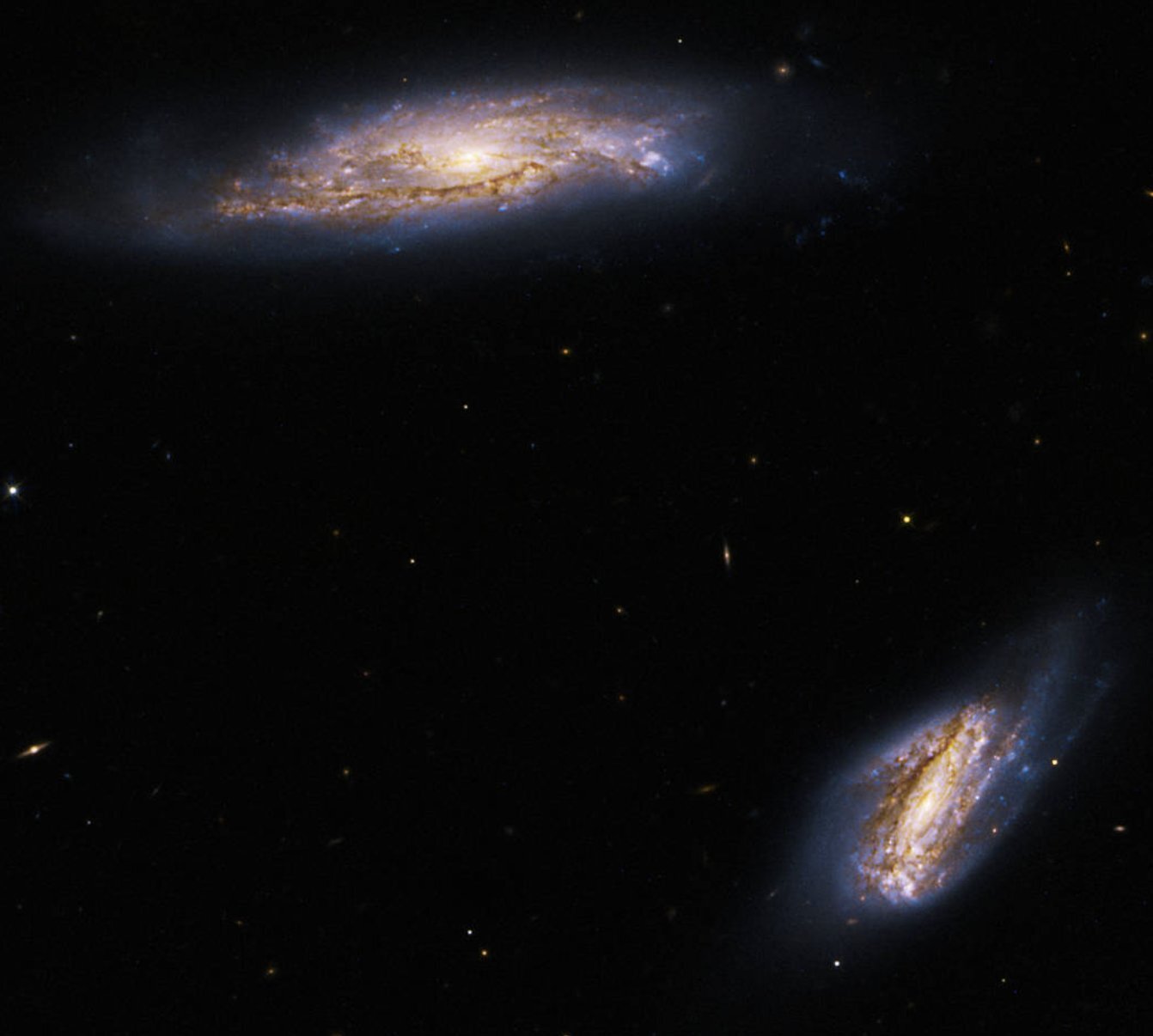These star-forming spirals look like galactic UFOs
Hubble was tasked to look at this region to learn more about 'clumpy' star formation.

The Hubble Space Telescope captured what appears to be a galactic flying saucer floating in space.
The otherworldly image of IC 564 forms part of a pair of galactic oddballs called Arp 303, located about 275 million light-years away from us. (Arp refers to the Atlas of Peculiar Galaxies, originally cataloged at 338 members by Halton Arp in 1966.)
Arp members were originally chosen for their unusual galactic structure, which is easily visible with both IC 564 along with its companion, IC 563 (at lower right in the image showing the two galaxies.)
Related: The best Hubble Space Telescope images of all time!

Hubble officials are going through the back catalog of data to assist with forthcoming observations of the James Webb Space Telescope, NASA said in a May 27 statement. Of particular note is the "clumpy" starbirth regions visible in infrared light, which may give clues as to galactic formation overall.
This latest image holds information from two separate Hubble observations. The first examined infrared light using the telescope's Wide Field Camera, while the second was part of a survey of "bright, interesting galaxies" using Hubble's Advanced Camera for Surveys, NASA said.
While NASA did not directly say how this imagery will assist Webb, of note is the newer telescope's efforts to understand how galaxies were formed and evolved, particularly in the early universe.
Get the Space.com Newsletter
Breaking space news, the latest updates on rocket launches, skywatching events and more!
Emerging areas of research in galaxies included how galaxies proliferated into the large variety visible today, the relationship between supermassive black holes and galaxies, and galactic mergers and collisions, according to a NASA webpage about forthcoming Webb research.
Some of the Webb Cycle 1 studies for galaxies will look at early galaxy formation, galaxies with "low metallicity" (rich in hydrogen and helium) and galaxy clusters to assist with its long-term quest to understand galactic evolution.
Follow Elizabeth Howell on Twitter @howellspace. Follow us on Twitter @Spacedotcom and on Facebook.
Join our Space Forums to keep talking space on the latest missions, night sky and more! And if you have a news tip, correction or comment, let us know at: community@space.com.

Elizabeth Howell (she/her), Ph.D., was a staff writer in the spaceflight channel between 2022 and 2024 specializing in Canadian space news. She was contributing writer for Space.com for 10 years from 2012 to 2024. Elizabeth's reporting includes multiple exclusives with the White House, leading world coverage about a lost-and-found space tomato on the International Space Station, witnessing five human spaceflight launches on two continents, flying parabolic, working inside a spacesuit, and participating in a simulated Mars mission. Her latest book, "Why Am I Taller?" (ECW Press, 2022) is co-written with astronaut Dave Williams.









